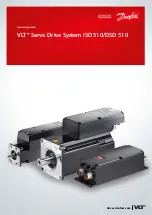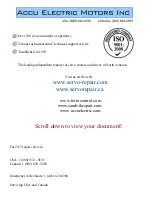
64
YASKAWA
|
YASKAWA AC Drive
CR700
Catalog
|
KAEP C710617 24
■
Wire Gauges and Wiring Distance
Motor torque can suffer as a result of voltage loss across
a long cable running between the drive and motor,
especially when there is low frequency output. Make sure
that a large enough wire gauge is used.
The LCD keypad requires an extensional cable for remote
operation. If an analog signal is used to operate the drive
via the input terminals, make sure that the wire between
the analog operator and the drive is no longer than
50 m,
and that it is properly separated from the main circuit
wiring. Use reinforced circuitry (main circuit and relay
sequence circuitry) to prevent inductance from
surrounding devices. To run the drive with a frequency
potentiometer via the external terminals, use twisted
shielded pair cables and ground the shield.
■
Counteracting Noise
Because CR
700 is designed with PWM control, a low
carrier frequency tends to create more motor fl ux noise than
using a higher carrier frequency. Keep the following points
in mind when considering how to reduce motor noise:
・
Lowering the carrier frequency (C
6-02) minimizes the
effects of noise.
・
A line noise fi lter can reduce the affects on AM radio
frequencies and poor sensor performance. See
“
Options
and Peripheral Devices
”
on page
36.
・
Make sure the distance between signal and power lines
is at least
10 cm (up to 30 cm is preferable), and use
twisted pair cable to prevent induction noise from the
drive power lines.
■
Leakage Current
High-frequency leakage current passes through stray
capacitance that exists between the power lines to the
drive, ground, and the motor lines. Consider using the
following peripheral devices to prevent problems with
leakage current.
Problem
Solution
Ground
Leakage
Current
MCCB is
mistakenly
triggered
・
Lower the carrier frequency set to
parameter C
6-02.
・
Try using a component designed
to minimize harmonic distortion for
the MCCB such as the NV series
by Mitsubishi.
Current
Leakage
Between
Lines
Thermal relay
connected to the
external terminals is
mistakenly triggered
by harmonics in the
leakage current
・
Lower the carrier frequency set to
parameter C
6-02.
・
Use the drive's built-in thermal
motor protection function.
The following table shows the guidelines for the set value
of the carrier frequency relative to the wiring distance
between the drive and the motor when using V/f control.
Wiring Distance
*
50 m or less
100 m or less
100 m or more
C
6-02: Carrier
Frequency Selection
1 to 6
(15 kHz or less)
1
,
2
(5 kHz or less)
1
(2 kHz or less
*
When a single drive is used to run multiple motors, the length of the
motor cable should be calculated as the total distance between the
drive and each motor.
When the wiring distance exceeds
100 m, use the
control mode in V/f Control (A
1-02
=
0).
Shield ground terminal
Multi-function
Analog Inputs
Frequency
Setting
Potentiometer
Frequency Setting Power Supply
10.5 V max. 20 mA
MFAI
1
[Default Setting: Frequency Reference]
-10 -
+
10 V (20 k
Ω
)/0 - 10 V (20 k
Ω
)
MFAI
2
[Default Setting: Frequency Bias]
-10 -
+
10 V (20 k
Ω
)/0 - 10 V (20 k
Ω
)
0 - 20 mA (250
Ω
)/4 - 20 mA (250
Ω
)
MFAI
3/PTC Input
[Default Setting:
Auxiliary Frequency Reference
1]
-10 -
+
10 V (20 k
Ω
)/0 - 10 V (20 k
Ω
)
A
1
A
2
A
3
AC
0 V
2 k
:
E (G)
0 - 10 V
4 - 20 mA
0 - 10 V
+
V
M
+
−
Connect a
0.1 F capacitor
Keep signal lines
and power lines at
least
30 cm
apart
noise filter
power
supply
sensor power supply
Connect shielded line to a neutral line (not to ground)
Use twisted shielded
pair cable
noise filter
Drive
sensor
<Provided by JEMA>
μ
Application Notes
(continued)





































